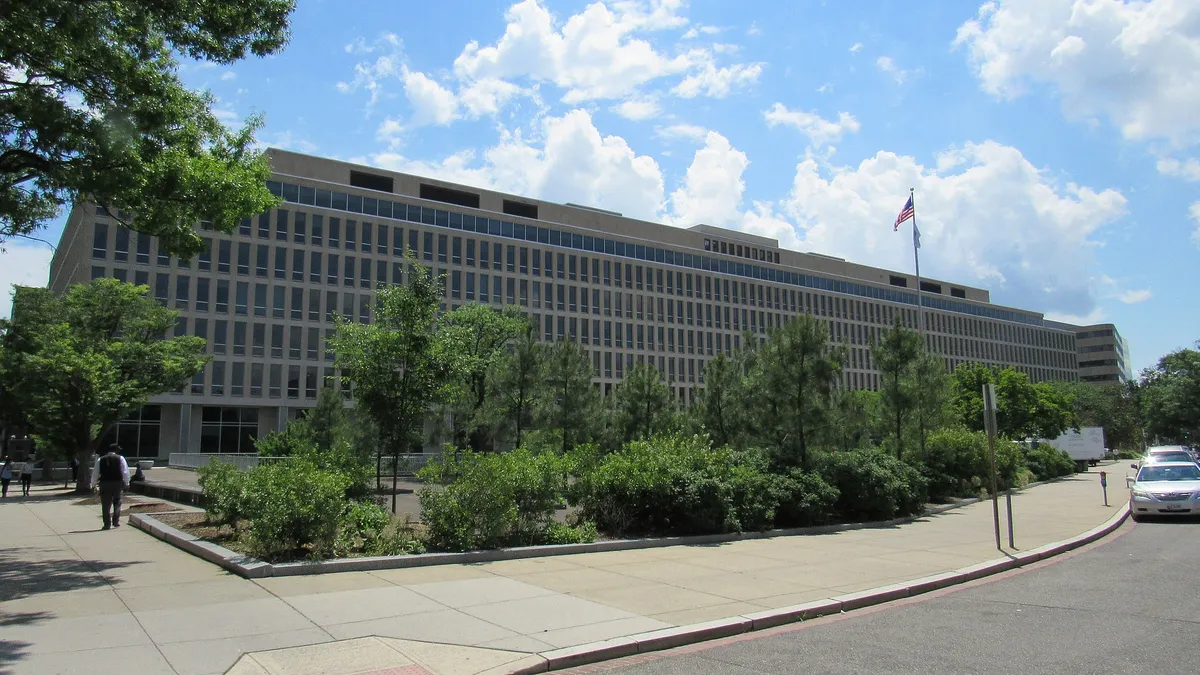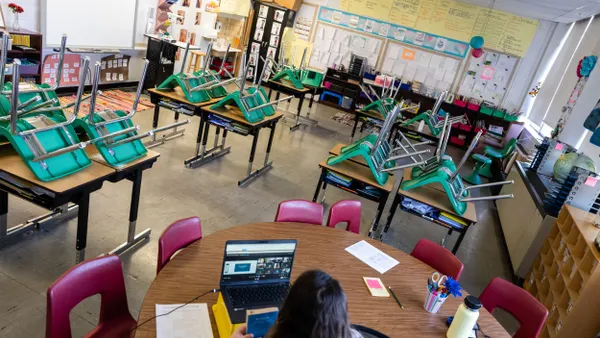Dive Brief:
-
The U.S. Department of Education’s Office for Civil Rights released a Q&A document Tuesday highlighting procedures schools should take when responding to reports of sexual harassment, which follows policy based on 2020 amendments to the Title IX regulation.
-
The department also made public nearly 1,000 pages of testimony taken during a five-day June public hearing about the amendments, where several participants spoke about the rights of transgender students competing in same-sex sports. The Q&A does not specifically address the rights of students who identify as transgender, but it does explain schools’ obligations in responding to complaints of sex discrimination.
-
The resources were made public while the department is conducting a comprehensive review of Title IX changes. That review will likely lead to proposed new rules. Until then, the 2020 amendments remain in effect.
Dive Insight:
In a statement, the Department of Education said the Q&A aims to assist schools, students and others by highlighting areas in which schools may have discretion in their procedures for responding to reports of sexual harassment. The Q&A also includes examples of policy language — taken from a variety of schools across the country — for procedures in addressing reports and complaints of sexual harassment, including sexual violence, for both K-12 and postsecondary schools.
The 2020 amendments went into effect last August at the same time that school leaders were addressing pandemic-related challenges. Several state attorneys general sued then-U.S. Secretary of Education Betsy DeVos to prevent the amendments from taking effect but lost in court.
Getting staff up to speed on changed practices and trying to interpret how the amendment fits with practices and policies for other programs, such as special education services, has been a big undertaking, according to school administrators.
For example, the 2020 amendment requires that a school respond whenever any school employee learns of allegations of sexual harassment. Prior to the change, responses were initiated when only certain employees were alerted to a sexual harassment allegation. Schools can also accept reports of sexual harassment communicated from people not employed by the school system.
Although schools cannot take actions that conflict with the 2020 rule, they may "adopt best practices for supporting survivors and standards of competence for conducting impartial grievance processes," the Q&A said.
In an OCR blog post, Suzanne Goldberg, acting assistant secretary for Civil Rights, said the office’s “thoughtful urgency” on Title IX priorities is guided by two Biden administration executive orders on sex discrimination in educational environments and preventing and combating discrimination based on gender identity and sexual orientation.
Regarding the rights of students who identify as transgender and the application under Title IX’s sex discrimination rules, the Biden administration has taken the stance that Title IX protects students from discrimination based on sexual orientation and gender identity — a reversal of the position taken by the Trump administration.
But exactly how schools should navigate claims of sex discrimination between those who favor and oppose sports participation or bathroom use of students who identify as transgender is still unclear. Last month, the U.S. Supreme Court announced it declined to hear arguments in Grimm v. Gloucester County School Board, a Virginia-based case about whether a school system violated Title IX by prohibiting a transgender male student from using the boys' restroom. The SCOTUS decision effectively leaves in place a lower court’s decision in favor of Grimm.













